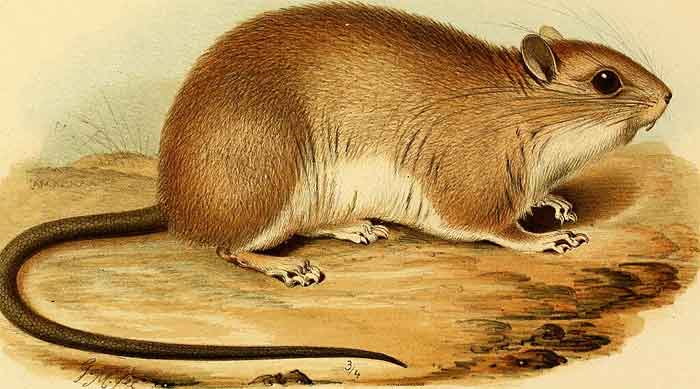
Superregnum: Eukaryota
Cladus: Unikonta
Cladus: Opisthokonta
Cladus: Holozoa
Regnum: Animalia
Subregnum: Eumetazoa
Cladus: Bilateria
Cladus: Nephrozoa
Superphylum: Deuterostomia
Phylum: Chordata
Subphylum: Vertebrata
Infraphylum: Gnathostomata
Megaclassis: Osteichthyes
Cladus: Sarcopterygii
Cladus: Rhipidistia
Cladus: Tetrapodomorpha
Cladus: Eotetrapodiformes
Cladus: Elpistostegalia
Superclassis: Tetrapoda
Cladus: Reptiliomorpha
Cladus: Amniota
Cladus: Synapsida
Cladus: Eupelycosauria
Cladus: Sphenacodontia
Cladus: Sphenacodontoidea
Cladus: Therapsida
Cladus: Theriodontia
Cladus: Cynodontia
Cladus: Eucynodontia
Cladus: Probainognathia
Cladus: Prozostrodontia
Cladus: Mammaliaformes
Classis: Mammalia
Subclassis: Trechnotheria
Infraclassis: Zatheria
Supercohors: Theria
Cohors: Eutheria
Infraclassis: Placentalia
Cladus: Boreoeutheria
Superordo: Euarchontoglires
Ordo: Rodentiaa
Subordo: Myomorpha
Superfamilia: Muroidea
Familia: Muridae
Subfamilia: Murinae
Tribus: Hydromyini
Genus: Pogonomelomys
Species: Pogonomelomys bruijni
Name
Pogonomelomys bruijni Peters & Doria, 1876
Vernacular names
English: Lowland brush mouse
References
IUCN: Pogonomelomys bruijni (Peters & Doria, 1876) (Critically Endangered)
Pogonomelomys bruijni in Mammal Species of the World.
Wilson, Don E. & Reeder, DeeAnn M. (Editors) 2005. Mammal Species of the World – A Taxonomic and Geographic Reference. Third edition. ISBN 0-8018-8221-4.
The lowland brush mouse (Pogonomelomys bruijni) is a species of rodent in the family Muridae. It is found in Indonesia on the island of Salawati and on the Vogelkop Peninsula in Papua Province, Indonesia.
Taxonomy
The grey pogonomelomys (Pogonomelomys brassi) was formerly included under this species.[2][3]
Ecology
The lowland brush mouse is an arboreal rodent and lives in holes in trees.[1]
Status
The tropical humid forests in which this mouse lives are increasingly being cleared to make way for agriculture and this must be affecting the species. Previously classified as "critically endangered", the lowland brush mouse has been found to be more plentiful than was once thought and has been reclassified as "near threatened".[1]
References
Gerrie, R.; Kennerly, R. (2019). "Pogonomelomys bruijni". IUCN Red List of Threatened Species. 2019: e.T17877A22449016. doi:10.2305/IUCN.UK.2019-2.RLTS.T17877A22449016.en.
Helgen, K.; Singadan, R.; Wright, D.; Allison, A.; Aplin, K. (2017). "Pogonomelomys brassi". IUCN Red List of Threatened Species. 2017: e.T136660A22449087. doi:10.2305/IUCN.UK.2017-2.RLTS.T136660A22449087.en.
Helgen, K.M. (2006). "A taxonomic and geographic overview of the mammals of Papua". In Marshall, A.J.; Beehler, B.M (eds.). The Ecology of Papua. Singapore: Periplus Editions. pp. 689–749. ISBN 9780794603939.
Musser, G. G.; Carleton, M. D. (2005). "Superfamily Muroidea". In Wilson, D. E.; Reeder, D. M. (eds.). Mammal Species of the World: A Taxonomic and Geographic Reference (3rd ed.). Johns Hopkins University Press. p. 1440. ISBN 978-0-8018-8221-0. OCLC 62265494.
Retrieved from "http://en.wikipedia.org/"
All text is available under the terms of the GNU Free Documentation License

